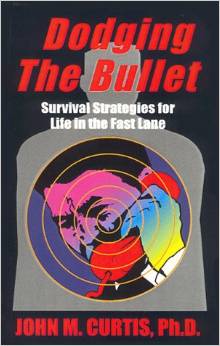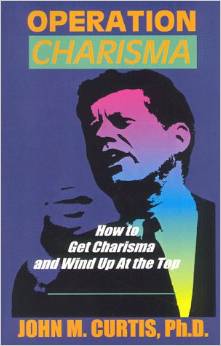Hennepin County, Minneapolis Judge Peter A. Cahill and twelve jurors saw compelling video evidence of the nine-minute, 29 second knee-on-the neck murder by 45-year-old former Minneapolis cop Derek Chauvin in the May 25, 2020, killing 46-year-old African American George Floyd. While the case looks open-and-shut for Chauvin to be convicted off either second or third degree murder, cases against police officers in the line of duty are never easy for jurors trying to show impartiality when the media narrative has already tried-and-convicted Chauvin for nearly a year of murder. Now the jury gets to hear the evidence, presented in graphic detail in the eyes of police 911 dispatcher Jena Lee Scurry who testified today she saw Floyd’s death live on her TV monitor, surprised that the incident took so much time. Jurors saw more video of the lengthy struggle eventually leading to Floyd’s death.
When 44-year-old Eric Garner was put into a seven-minute chokehold in Staten Island by New York City cop Daniel Pantaleo July 17, 2014, he said he couldn’t breath he wasn’t even charged by the New York City District Attorney of manslaughter, second or third degree murder. Federal grand jury found Dec. 8, 2014 insufficient evidence to charge Pantaleo with a federal hate crime. On Aug. 18, 2018, over five years after Garner’s chokehold death, the New York City Police Department fired Pantaleo. In Chauvin’s case, he was fired May 28, 2020, along with three offficers that participated in George Floyd’s arrest. Violence and rioting broke out around the country June 1, less than a week after Floyd’s videotaped murder. Unlike the Eric Garner chokehold death, the public finally gets to prosecute Chauvin for kneeling on Floyd’s neck for nearly nine-and-a-half minutes.
Chauvin’s defense attorney Eric Nelson hurt his client’s case claiming to a wide-eyed jury that Chauvin actually died from a drug overdose and heart condition, not from Chauvin’s nine-and-half-minutes on his neck. Nelson said with a straight face “the evidence is about more than nine minutes of video,” telling the jury that Floyd tried to pass a counterfeit $20 bill at a convenience store, whose employees thought Floyd was under the influence Police arriving at the scene led by Chauvin said that when Floyd was arrested he took drugs in possession and swallowed them, suggesting that he overdosed while in custody. Chauvin and the three other arresting officers claim that Floyd resisted arrest, the same argument given by Rodney King’s Los Angeles Police Department arresting officers in Simi Valley, Calif. March 3, 1991. King’s beating was also videotaped for all to see.
Chauvin’s trial is expected to take about three weeks before the prosecution calls all of its witnesses. If the defense expects the jury to buy a technical argument about drugs found in Floyd’s body or a possible heart condition at age 46, it’s not going to sway jurors away from convicting Chaurvin on either second or third degree murder. Whether Chauvin was high or had a heart condition at the time of his arrest, defense medical experts aren’t going to say that Floyd’s death was imminent, regardless of the arrest and knee-in-the-neck by Chauvin. Saying Floyd “put drugs in his mouth” when confronted by the police is pure hearsay, when it comes to any bearing on Floyd’s cause of death. No medical expert can say with any certainty that drug overdose or a pre-existing heart condition caused Floyd’s death. Nelson asks the jury to believe Floyd should have survived Chauvin’s chokehold.
Nelson told jurors today that Floyd’s autopsy revealed Floyd consumed a “speedball” comprised of meth and fentanyl, suggesting that drugs could have killed the six foot, three-inch, 240 pound Floyd when officers tried to execute an arrest. Nelson told jurors that Floyd fought back ferociously, resisting officers’ arrest, requiring extraordinary measures to bring Floyd under control. Nelson tried to paint Chauvin, at five feet, nine-inches, 140 pounds as a much smaller man requiring extraordinary measures to complete Floyd’s arrest against Floyd’s resistance. When an all white jury heard the same argument about Rodeny King in 1991, his defense attorney Willam J. Kopney argued that King deserved the beating because he resisted arrest. While LAPD officers were all acquitted April 29, 1992 of a civil rights violations, the same thing isn’t going to happen in Minneapolis.
Prosecutors have all the evidence needed to convict Chauvin of second-degree murder, showing no premeditation but negligent homicide. With all the compelling videotape, it’s going to be hard for jurors to ignore the length of time Chauvin’s knee was on Floyd’s neck. Nelson would have spent his time more wisely not going for the homerun but for a solid single, trying to make jurors understand the degree of regret by his client for mistaking a horrible made. Stretching to far into the realm of drug overdoes and heart conditions damages Nelson’s credibility as he pleads with jurors to keep this a murder trial, not one about social justice. Nelson told jurors that “the use of force is not attractive,” but necessary for Chauvin to have done his job of subduing an unruly suspect. Once Nelson got into the weeds about a “speedball” or Floyd’s heart condition, he lost the jury on the first day.



